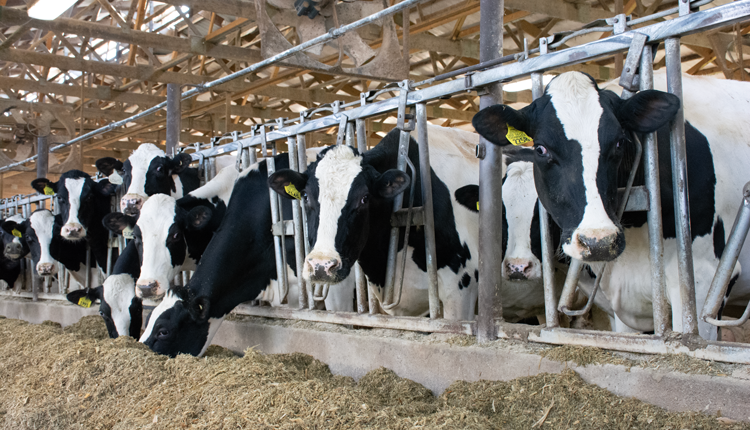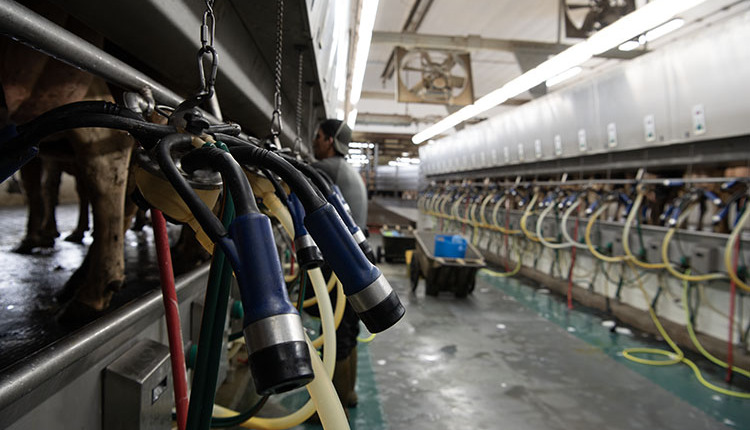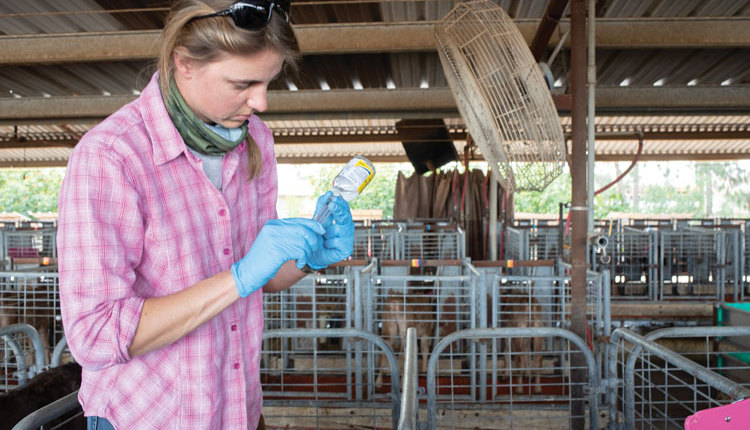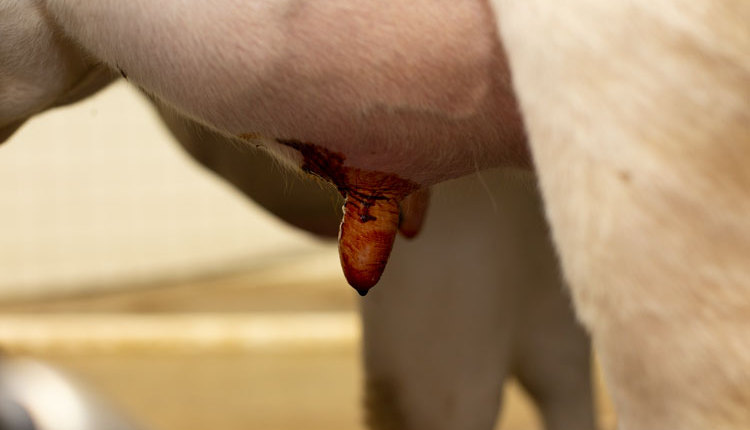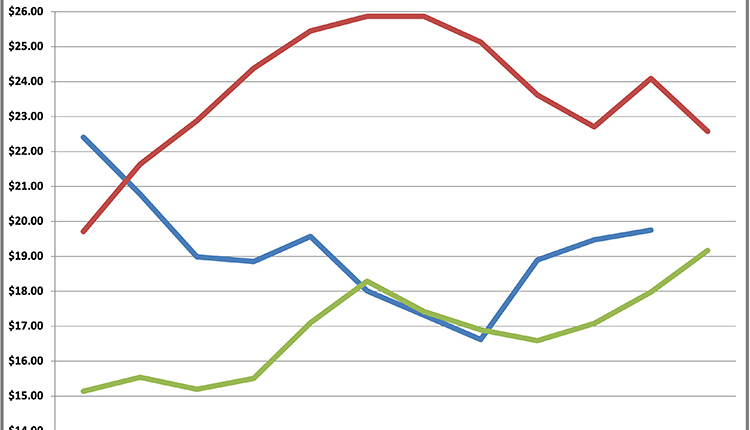Relentless attention to details sets these National Dairy Quality Award winners apart. They're on top of everything from fastidious stall care to meticulous milking and from frequent use of CMT paddles to painstaking dry-off procedures.
Each year, it gives us great pleasure to feature the Platinum winners in the National Dairy Quality Awards program. We appreciate being a part of this recognition program conducted in cooperation with the National Mastitis Council.
This article takes us behind the scenes to what they do for their cows from day to day. It becomes evident that these operations thrive on having an all-out commitment to producing high-quality food, having dedication to the health and well-being of their cattle, and having a passion for perfection.
A total of 172 screening nominations were received in September. Fifty-nine of those were given further review by the panel of judges. These seven emerged as the best of the best. Read about the seven Platinum herd winners. It is noteworthy that three of the seven winners featured here are repeat Platinum recipients. Meet the Platinum winners:
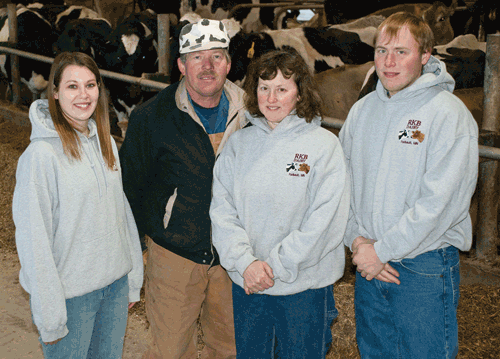
It's two years in a row for the Bauers, Faribault, Minn.... The Bauers (Randy and Kathy at center with daughter Melisa and son Glen) were nominated by Doug Wertish of the South Central College farm business management program. He said, "Randy and Kathy take the time and energy to look for any small thing that may improve their dairy operation in terms of production and efficiency." Between June 2009 and May 2010, the Bauers' 102-cow herd had an average cell count of just 62,000. They had no udder health culls during that period.

Box Canyon Dairy Number 3, Wendell, Idaho, with 900 cows, is the largest of the Platinum winners. The operation had an average somatic cell count of just 57,000. Box Canyon is a partnership involving (from left) Jerimy Craig, Frans Aardema, Jeannie Wolverton, and Tom Heida. Scott Haag (not shown) is manager. Their Holsteins are housed in open lots with shades. Six employees do most of the milking in a parallel. All wear gloves during milking. The routine is predip, strip, dry with cloth towels, and attach. Tank samples for culturing are taken weekly. Box Canyon was nominated by Russ Dekruyf, Glanbia Foods.

Standard plate count for the DeKams, Falmouth, Mich., averaged just 1,000. The operation includes (from left) Esther (holding Levi) and Dave DeKam with Collin in front, Jerry and Kasia Agema, and Randy Coffey. Most milking of their high-producing, 290-cow herd is done by employees in a double-10 parallel. The herd is housed in a sand-bedded free stall barn. Fewer than 3 percent of their cows had clinical mastitis last year. For mild and moderate cases, they treat with Spectramast, give vitamin B, and use Uddermint. The DeKams were nominated by Dave Clark with Dairy Marketing Services.
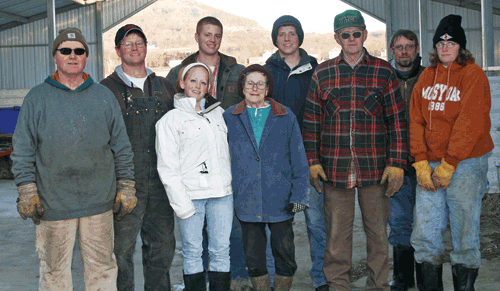
The Hendersons, Schaghticoke, N.Y., are repeat Platinum winners. Their 136-cow herd is housed in a free stall barn with rubber mats that are topped with sand. To maintain healthy teat ends, they watch vacuum level closely, change inflations every 1,000 milkings, have pulsators rebuilt every year, and use high-quality pre- and postdips. The routine in their double-6 herringbone is wipe teats, predip, strip, predip again, dry teats, and attach. "Every aspect of this operation is managed with care and concern from calfhood on," said nominators Jesse Vandergrift and George Pfeiffer with Archdale Ag Products.
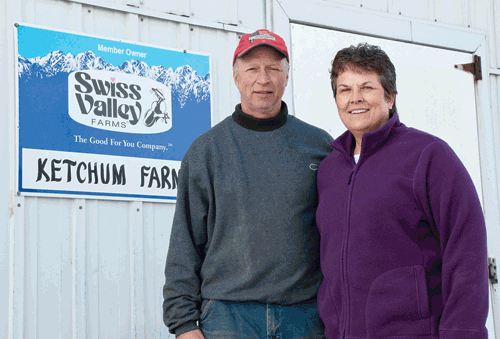
Also repeat Platinum National Dairy Quality Award winners, Robert and Terri Ketchum, Utica, Minn., were nominated by Bob Zielsdorf of Swiss Valley Farms, who said that Robert keeps excellent records and does a lot of little things to produce excellent quality milk. The Ketchums use a CMT paddle on all fresh cows four days after calving. If a cow is positive, a milk sample is taken and cows are treated according to culture results. Fewer than 2 percent of the cows in the 126-head herd had a clinical case last year. Their herd is housed in a three-row, sand-bedded free stall barn and milked in a double-8 parallel. Stalls are cleaned three times a day and rebedded weekly.

Kenneth and Marlus Schmitz Norwalk, Wis., are shown with their children (from left) Katelyn, Matthew, and Taylor. They also were nominated by Bob Zielsdorf, Swiss Valley Farms. He called the Schmitz family very deserving as they have received both Silver and Gold NDQA recognition in the past. They check daily to make sure inflations aren't twisted in shells, and their milking system is checked monthly. Inflations are changed on a strict schedule, and air and milk hoses are replaced twice a year. The 86-cow herd is in a tie stall barn with mats topped with dry sawdust. Stalls are scraped three to four times a day.
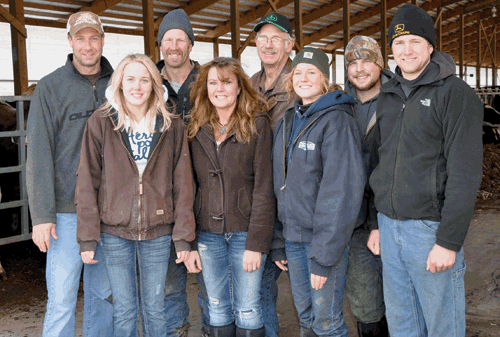
VanPolen Farms is the seventh and final Platinum winner in the National Dairy Quality Awards program. Somatic cell count averaged just 60,000 last year at VanPolen Farms, Marion, Mich. The 225-cow herd is housed in sand-bedded free stalls. At dry-off, cows get either Albadry or Tomorrow followed by Orbeseal and Blockade barrier dip. The VanPolens are very particular when it comes to prepping, cow welfare, nutrition, and barn management, said nominators Preston Cole and Katie Pierson of Michigan Milk Producers Association. Shown in front (from left) are Beth and Laurie VanPolen, Kristin Hamacher, and Mike VanPolen. Back row (from left) are Rick, Duane, and Ken VanPolen, and Alex Hamacher.
What is your milking procedure?
Bauer: There is a written milking procedure, and milkers wear gloves. We remove sand from teats and udders; strip four times from each quarter into the strip cup; dip; dry teats with washable, microfiber towels; attach milking units; and postdip.
Box Canyon: There is a written milking procedure, and milkers wear gloves. We predip, strip out foremilk, dry teats with cloth towels, attach milking units, and postdip.
DeKam: There is a written milking procedure, and milkers wear gloves. We wipe sand or debris from the bottom of udder, predip, strip out foremilk, dry teats with towels, attach milking units, postdip, and occasionally hand strip after milking as needed.
Henderson: Some milkers wear gloves. We wipe teats clean of all debris, predip, strip out foremilk, predip again, dry teats, attach milking units, and postdip.
Ketchum: There is a written milking procedure, and milkers wear gloves. We brush sand and debris off udders and teats, predip, strip out foremilk, dry teats, attach milking units, and postdip.
Schmitz: There is a written milking procedure, and milkers wear gloves. We predip; dry teats with thick, soft paper towels; strip out foremilk; attach milking units; and postdip.
VanPolen: There is a written milking procedure, and milkers wear gloves. We wipe teats with a dry cloth towel to remove dirt, manure, and sand; strip out foremilk; predip; dry teats; attach milking units; hand strip after milking, and postdip.
You can read more about how these National Dairy Quality Award Winners produce a top-quality product on page 22 of the January 10, 2011 Hoard's Dairyman.
Each year, it gives us great pleasure to feature the Platinum winners in the National Dairy Quality Awards program. We appreciate being a part of this recognition program conducted in cooperation with the National Mastitis Council.
This article takes us behind the scenes to what they do for their cows from day to day. It becomes evident that these operations thrive on having an all-out commitment to producing high-quality food, having dedication to the health and well-being of their cattle, and having a passion for perfection.
A total of 172 screening nominations were received in September. Fifty-nine of those were given further review by the panel of judges. These seven emerged as the best of the best. Read about the seven Platinum herd winners. It is noteworthy that three of the seven winners featured here are repeat Platinum recipients. Meet the Platinum winners:

It's two years in a row for the Bauers, Faribault, Minn.... The Bauers (Randy and Kathy at center with daughter Melisa and son Glen) were nominated by Doug Wertish of the South Central College farm business management program. He said, "Randy and Kathy take the time and energy to look for any small thing that may improve their dairy operation in terms of production and efficiency." Between June 2009 and May 2010, the Bauers' 102-cow herd had an average cell count of just 62,000. They had no udder health culls during that period.

Box Canyon Dairy Number 3, Wendell, Idaho, with 900 cows, is the largest of the Platinum winners. The operation had an average somatic cell count of just 57,000. Box Canyon is a partnership involving (from left) Jerimy Craig, Frans Aardema, Jeannie Wolverton, and Tom Heida. Scott Haag (not shown) is manager. Their Holsteins are housed in open lots with shades. Six employees do most of the milking in a parallel. All wear gloves during milking. The routine is predip, strip, dry with cloth towels, and attach. Tank samples for culturing are taken weekly. Box Canyon was nominated by Russ Dekruyf, Glanbia Foods.

Standard plate count for the DeKams, Falmouth, Mich., averaged just 1,000. The operation includes (from left) Esther (holding Levi) and Dave DeKam with Collin in front, Jerry and Kasia Agema, and Randy Coffey. Most milking of their high-producing, 290-cow herd is done by employees in a double-10 parallel. The herd is housed in a sand-bedded free stall barn. Fewer than 3 percent of their cows had clinical mastitis last year. For mild and moderate cases, they treat with Spectramast, give vitamin B, and use Uddermint. The DeKams were nominated by Dave Clark with Dairy Marketing Services.

The Hendersons, Schaghticoke, N.Y., are repeat Platinum winners. Their 136-cow herd is housed in a free stall barn with rubber mats that are topped with sand. To maintain healthy teat ends, they watch vacuum level closely, change inflations every 1,000 milkings, have pulsators rebuilt every year, and use high-quality pre- and postdips. The routine in their double-6 herringbone is wipe teats, predip, strip, predip again, dry teats, and attach. "Every aspect of this operation is managed with care and concern from calfhood on," said nominators Jesse Vandergrift and George Pfeiffer with Archdale Ag Products.

Also repeat Platinum National Dairy Quality Award winners, Robert and Terri Ketchum, Utica, Minn., were nominated by Bob Zielsdorf of Swiss Valley Farms, who said that Robert keeps excellent records and does a lot of little things to produce excellent quality milk. The Ketchums use a CMT paddle on all fresh cows four days after calving. If a cow is positive, a milk sample is taken and cows are treated according to culture results. Fewer than 2 percent of the cows in the 126-head herd had a clinical case last year. Their herd is housed in a three-row, sand-bedded free stall barn and milked in a double-8 parallel. Stalls are cleaned three times a day and rebedded weekly.

Kenneth and Marlus Schmitz Norwalk, Wis., are shown with their children (from left) Katelyn, Matthew, and Taylor. They also were nominated by Bob Zielsdorf, Swiss Valley Farms. He called the Schmitz family very deserving as they have received both Silver and Gold NDQA recognition in the past. They check daily to make sure inflations aren't twisted in shells, and their milking system is checked monthly. Inflations are changed on a strict schedule, and air and milk hoses are replaced twice a year. The 86-cow herd is in a tie stall barn with mats topped with dry sawdust. Stalls are scraped three to four times a day.

VanPolen Farms is the seventh and final Platinum winner in the National Dairy Quality Awards program. Somatic cell count averaged just 60,000 last year at VanPolen Farms, Marion, Mich. The 225-cow herd is housed in sand-bedded free stalls. At dry-off, cows get either Albadry or Tomorrow followed by Orbeseal and Blockade barrier dip. The VanPolens are very particular when it comes to prepping, cow welfare, nutrition, and barn management, said nominators Preston Cole and Katie Pierson of Michigan Milk Producers Association. Shown in front (from left) are Beth and Laurie VanPolen, Kristin Hamacher, and Mike VanPolen. Back row (from left) are Rick, Duane, and Ken VanPolen, and Alex Hamacher.
Here is what the Platinum winners do:
What is your milking procedure?
Bauer: There is a written milking procedure, and milkers wear gloves. We remove sand from teats and udders; strip four times from each quarter into the strip cup; dip; dry teats with washable, microfiber towels; attach milking units; and postdip.
Box Canyon: There is a written milking procedure, and milkers wear gloves. We predip, strip out foremilk, dry teats with cloth towels, attach milking units, and postdip.
DeKam: There is a written milking procedure, and milkers wear gloves. We wipe sand or debris from the bottom of udder, predip, strip out foremilk, dry teats with towels, attach milking units, postdip, and occasionally hand strip after milking as needed.
Henderson: Some milkers wear gloves. We wipe teats clean of all debris, predip, strip out foremilk, predip again, dry teats, attach milking units, and postdip.
Ketchum: There is a written milking procedure, and milkers wear gloves. We brush sand and debris off udders and teats, predip, strip out foremilk, dry teats, attach milking units, and postdip.
Schmitz: There is a written milking procedure, and milkers wear gloves. We predip; dry teats with thick, soft paper towels; strip out foremilk; attach milking units; and postdip.
VanPolen: There is a written milking procedure, and milkers wear gloves. We wipe teats with a dry cloth towel to remove dirt, manure, and sand; strip out foremilk; predip; dry teats; attach milking units; hand strip after milking, and postdip.
You can read more about how these National Dairy Quality Award Winners produce a top-quality product on page 22 of the January 10, 2011 Hoard's Dairyman.
